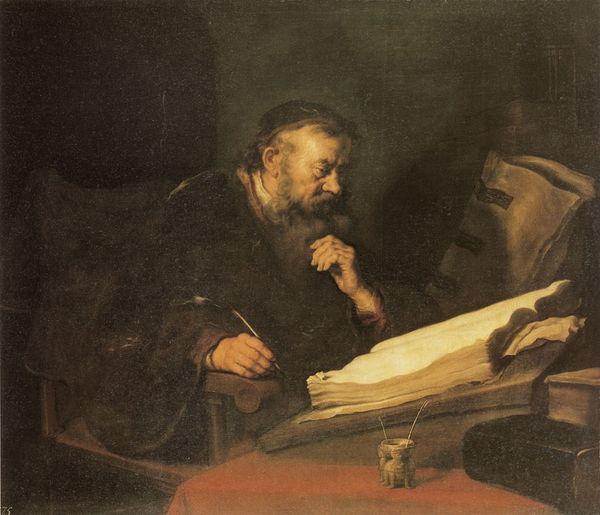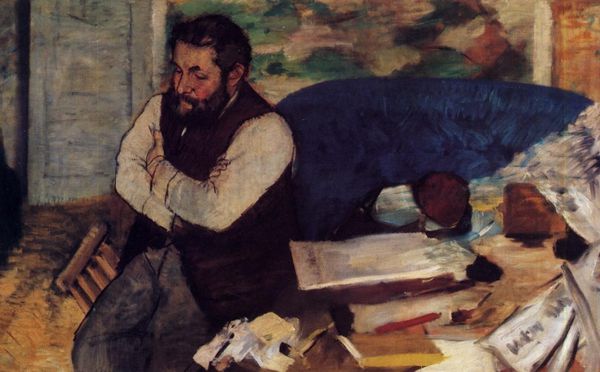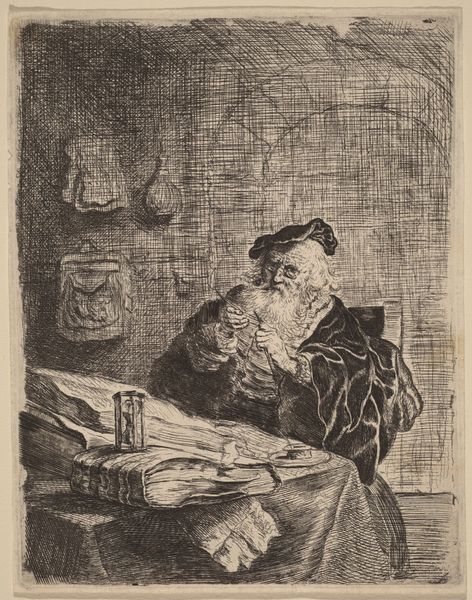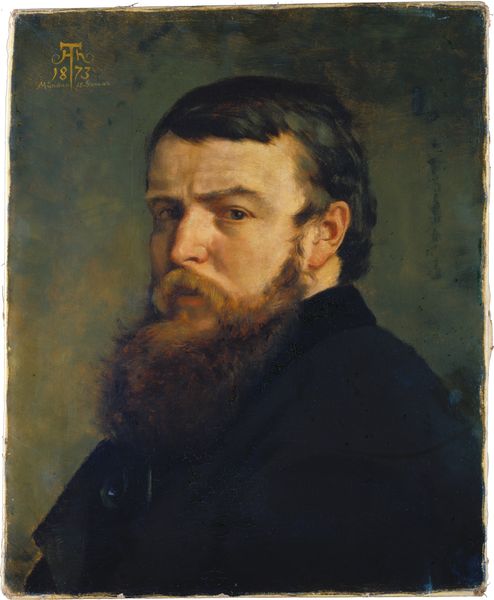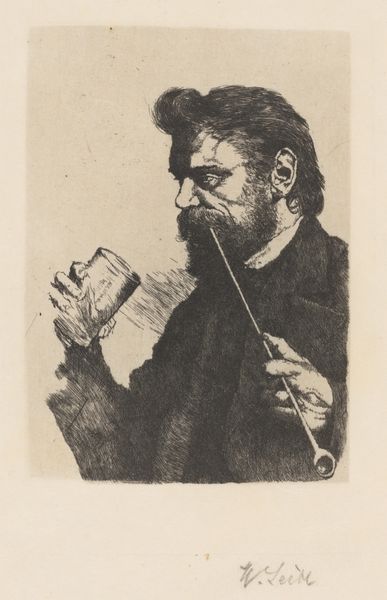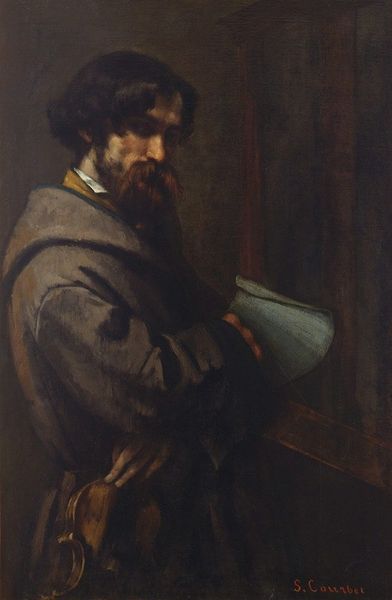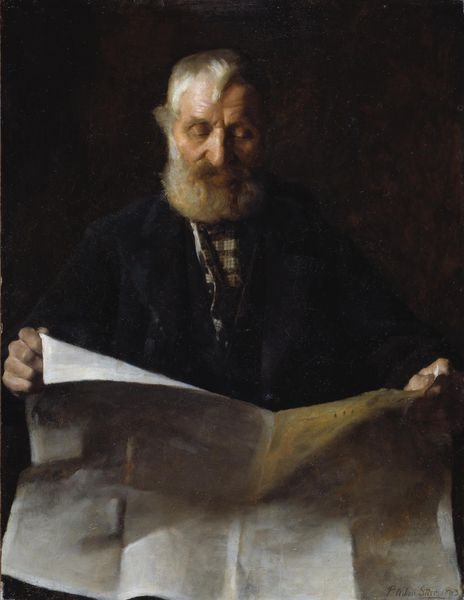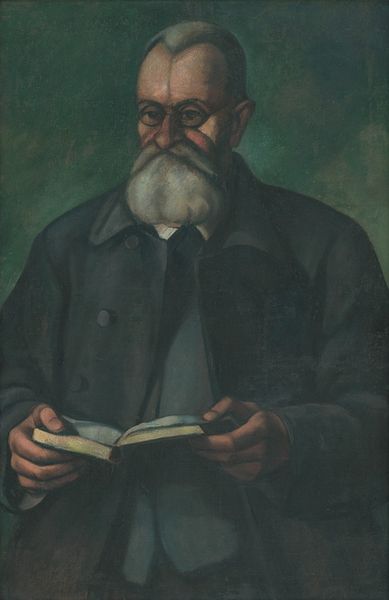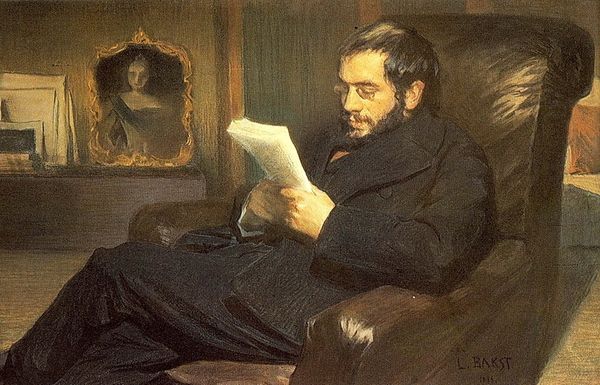
painting, oil-paint
#
portrait
#
self-portrait
#
painting
#
impressionism
#
oil-paint
#
oil painting
#
intimism
Copyright: Public Domain: Artvee
Curator: Here we have Pierre-Auguste Renoir’s 1872 portrait of Claude Monet, rendered in oil paint, capturing a surprisingly intimate moment. Editor: There’s a contemplative air about this portrait. It's all very muted in tone; the figure of Monet blends subtly with the darker background, the wisps of smoke adding to the thoughtful, smoky atmosphere. Curator: Absolutely. Given Renoir and Monet's intertwined histories, this work really allows for a deep dive into the artistic brotherhood that propelled Impressionism. The salons, the rejections, the mutual support. What does this intimate depiction of Monet signal? Editor: It speaks to a rebellion, perhaps. Renoir, known for capturing Parisian life, instead gives us Monet caught in a domestic scene, focusing on intellect rather than fashionable society. There's the pipe, the book... this subverts expectations tied to Impressionism and portraiture itself. Think about the gendered and class-based notions attached to leisure and artistic pursuits at the time. Curator: Right, and Renoir also reframes his peer in a different context. How are artists valued or devalued based on what or who they paint? If Renoir focused solely on landscapes, how would the movement’s acceptance have played out differently? Editor: The relationship between Monet and Renoir, both facing a conservative art world and societal expectations, creates a fascinating discourse around how artists portray each other and navigate these challenges together. This artistic solidarity in the face of societal pressures adds depth. This challenges the romantic idea of the lone genius artist. Curator: It’s interesting to consider the ways social structures impact not just artistic expression, but even the very perception and legacy of art movements. It prompts us to really evaluate art historical narratives that prioritize certain figures or themes over others. Editor: Yes, Renoir’s portrayal captures a moment of personal reflection, but it also triggers reflections about art history and society itself. Curator: Exactly, making us think critically about how the images we consume actively participate in ongoing cultural conversations.
Comments
No comments
Be the first to comment and join the conversation on the ultimate creative platform.



